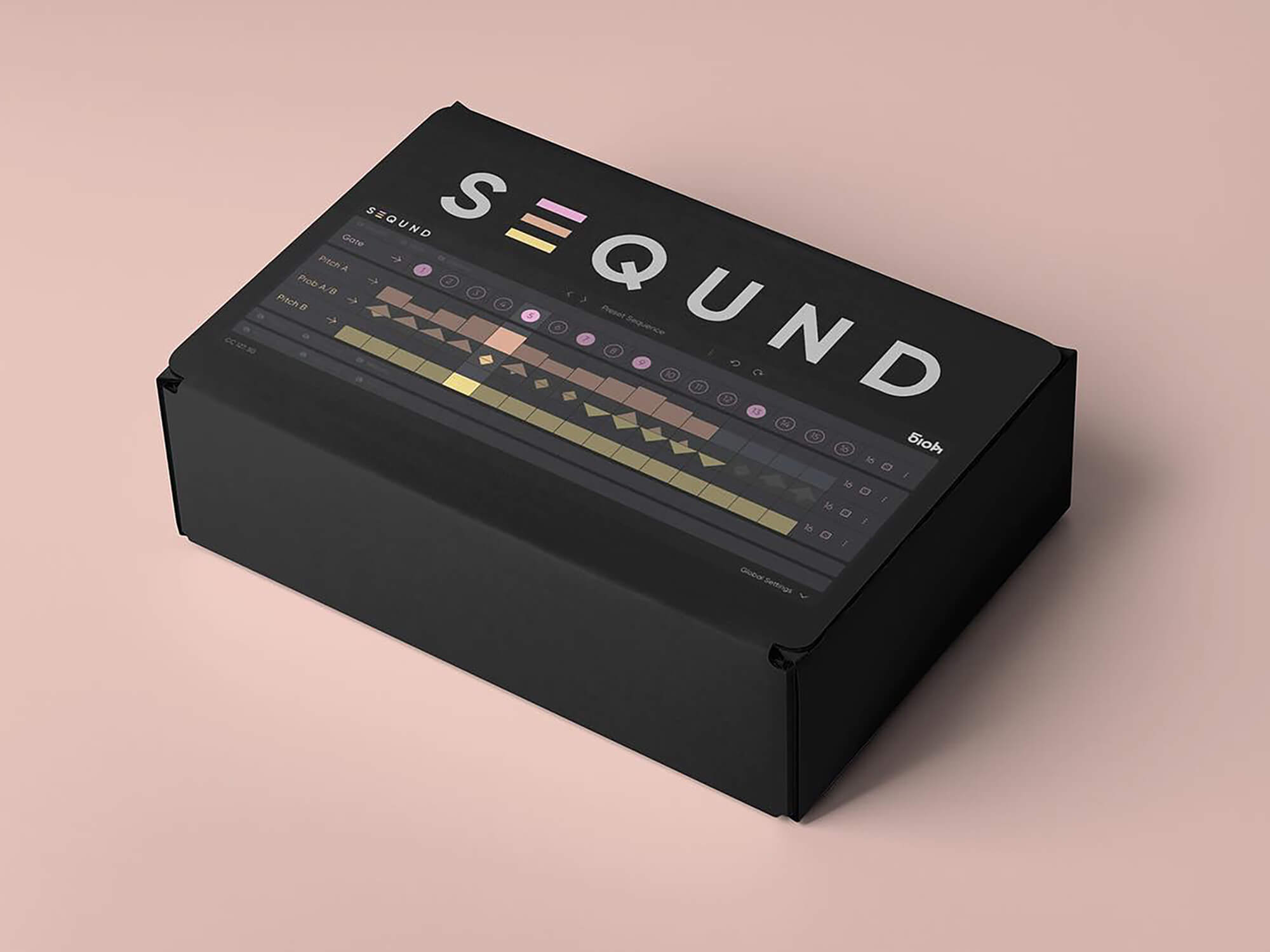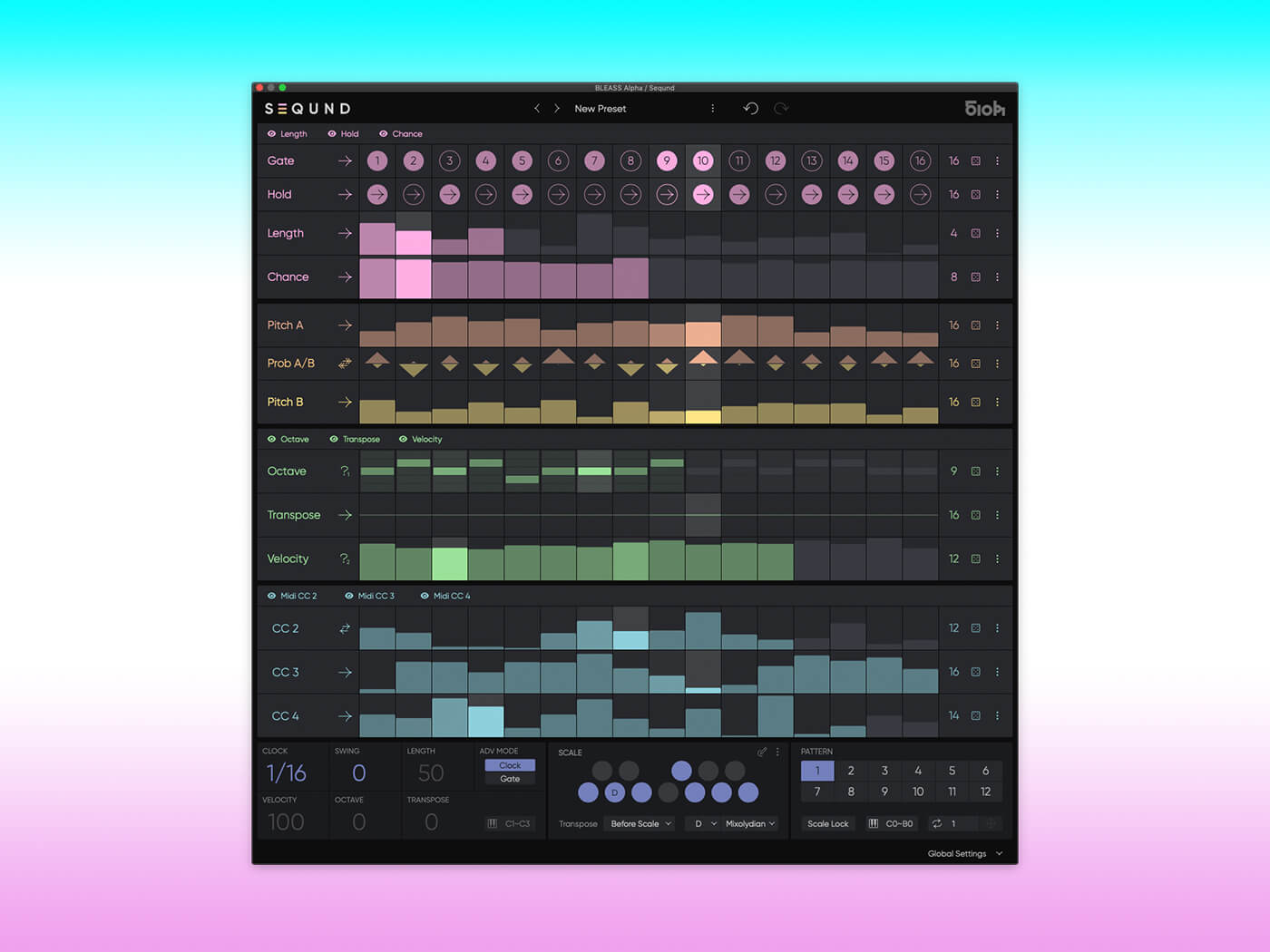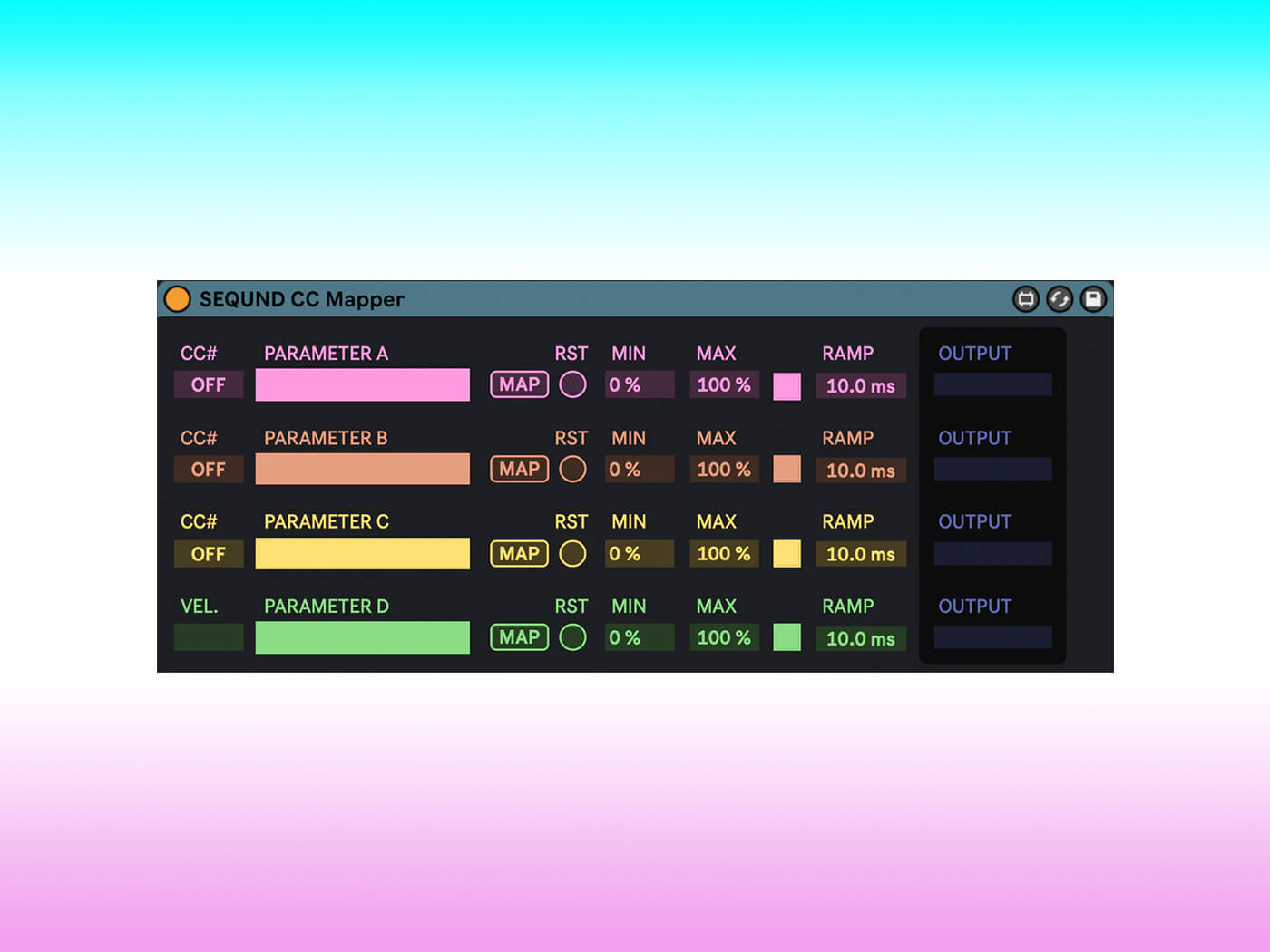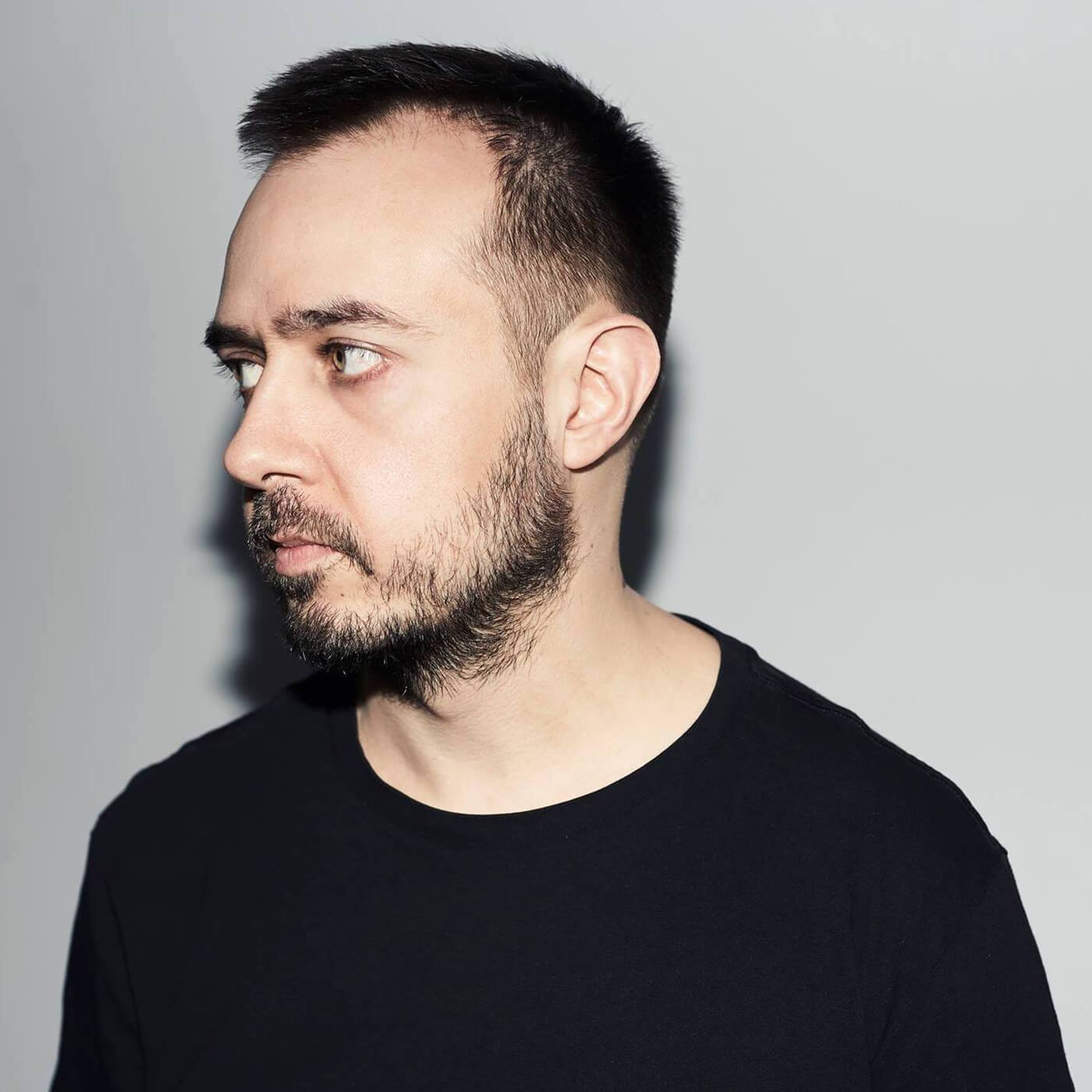Alexkid’s SEQUND plugin is a polyrhythmic pattern sequencer that’s escaped Max4Live’s confines
A promising pattern sequencer provides an experimental and inspirational alternative to conjuring-up notes onto a blank canvas – but is SEQUND a promising pattern sequencer?

SEQUND Sequencer. Image: 510k
Review Overview
Our rating
8
Our verdict
⊕ Varied lane lengths result in fascinating polyrhythms
⊕ Trigger chance and pitch probability give a form of controlled randomisation
⊕ Can render a pattern so it can be dragged to a MIDI track
⊖ Setting notes in pitch lanes can be fiddly and labelling is lacking
⊖ Pitch quantiser restricts pitch lane note choices
⊖ No way to tell SEQUND to restart a pattern from its beginning
For French-born and German-based producer Alexkid, the arrival of Max4Live ignited a deep interest in creating custom sequencers for the platform.
READ MORE: The 12 best Max for Live devices in 2023
“I love polyrhythms,” he says when chatting about SEQUND on The Josh Baker Podcast. “There’s things that you could do with two analogue sequencers, synchronising them, and I decided this is something I would try to do with Max”.
Although the development process was slow, the resulting sequencers, when offered up for sale via a small online store, enjoye wide interest and strong sales. Inspired by this, Alexkid teamed up with Tadashi Suginomori of HY-Plugins and Resonant Design on a project to combine and streamline his Max4Live devices into a format compatible with any DAW. The result is SEQUND.

Polyrhythmic patterns
The sequencer’s polyrhythmic abilities stem from each of its 13 lanes having an independent length up to a maximum of 16 steps. This is rather a low sequence length for a modern pattern sequencer, but on balance it does keep things focused, ensuring an entire pattern can be viewed and edited within a single, non-scrolling window.
Lane length and play direction are very easy to configure, but the absence of a means to set the length and/or direction of all lanes simultaneously can be a nuisance. Also, step resolution is a global setting so, with no provision of per-lane subdivisions, it isn’t possible to have one lane progress at a different rate to another, which is a shame.
SEQUND’s advance mode has a bearing on polyrhythms too. This determines how the plugin syncs to the host, with options of clock or gate. The former locks each lane’s play position to the host song position, and so the length of a lane has a bearing on that lane’s current play position relative to lanes of different length, and relative to the host’s bar-and-beat position.
This makes perfect sense, but can throw up problems when switching between patterns of different lengths, or when you want a polyrhythmic pattern to start from its beginning at some point other than the host’s song start position. This can be worked around via the plugin’s ability to render a pattern so that it can be dragged to a MIDI track in the host DA; this fixes any random variations in place, so is an imperfect solution.
When running in gate mode, each activated step on SEQUND’s gate lane causes the play position of all other lanes to advance a step (if a probability test is passed – see below). This can make for more complex polyrhythms and pattern variations, but still wants for some means of resetting all lanes to their initial step.

Probably maybe
Probability comes into play in two ways. The first is the Chance lane, which defines the percentage chance that a step will actually play when triggered by the Gate lane. The other comes courtesy of three pitch lanes: Pitch A, Pitch B, and Prob A/B.
The Pitch A and B lanes define sequences of notes, whilst the Prob A/B lane defines a per-step probability that governs whether it is Pitch A or Pitch B that will be heard when the step plays. Factor in different lane lengths and play directions, and any semblance of robotic repetition quickly disappears. And if you’re hankering after a bit of true randomness, though, clicking a lane’s dice button will fill that lane with random values, albeit within user-definable maximum and minimum constraints.
Helpfully, with all this randomness flying around, SEQUND features a global pitch quantiser that imposes a user-selected key and scale on proceedings. The plugin comes with a choice of 36 scales built in, as well as a tool that allows you to define and store your own custom scales.
The quantiser’s key and scale are applied directly to the pitch lanes themselves, limiting the notes that can be selected, and whilst this does make sense up to a point, we feel it smears different aspects of SEQUND’s pitch logic across different parts of the plugin. Throw in the Octave and Transpose lanes (not to mention the ability to transpose the pattern based on incoming MIDI notes) and it can become very tricky to understand exactly how SEQUND is choosing the notes it is playing. Moreover, as a side-effect of this restriction, changing the quantiser’s key or scale causes the notes in the pitch lanes to change too, and often in a way that breaks the intervallic relationships within the sequence.
With these issues in mind, we would have preferred for the pitch lanes to remain fully chromatic at all times, and for the pitch quantiser to impose its diatonic restrictions in a standalone way.
On SEQUND thoughts…
Most lanes represent their values with vertical faders, but in the case of the Pitch A and B lanes the combination of a limited lane height and a three-octave note range can make things fiddly when setting specific notes.

Furthermore, when dragging a fader the value is displayed on the step itself, which is good, but this only appears during dragging, which is not so good, especially when dealing with note names because they can’t be estimated by looking at the fader position. An option to make the note names visible at all times would fix this.
All of which is to say that there is scope for SEQUND to be further honed and fine-tuned, but taken as a first foray into the wider world of plugins it is very impressive. The plugin is a lot of fun to use and gives a satisfyingly organic and experimental feel to your music-making sessions. The advantage of this is probably best explained by Alexkid himself: “When you work with [pattern sequencers] you always have a bit more experimentation going on […] Sometimes you have accidents because you messed up, and the results can become interesting. I wanted to have something that was giving that feeling.”
Check out SEQUND at 510k’s website.
Key features
- Price: €59
- Polyrhythmic pattern sequencer plugin for AU and VST hosts
- Monophonic note output plus three assignable MIDI CC lanes
- Independent lane lengths allow the creation of complex polyrhythmic patterns
- Note pitch can be selected from two options based on probability
- Storage for 12 patterns per preset
- Global swing setting
- Multiple undo and redo